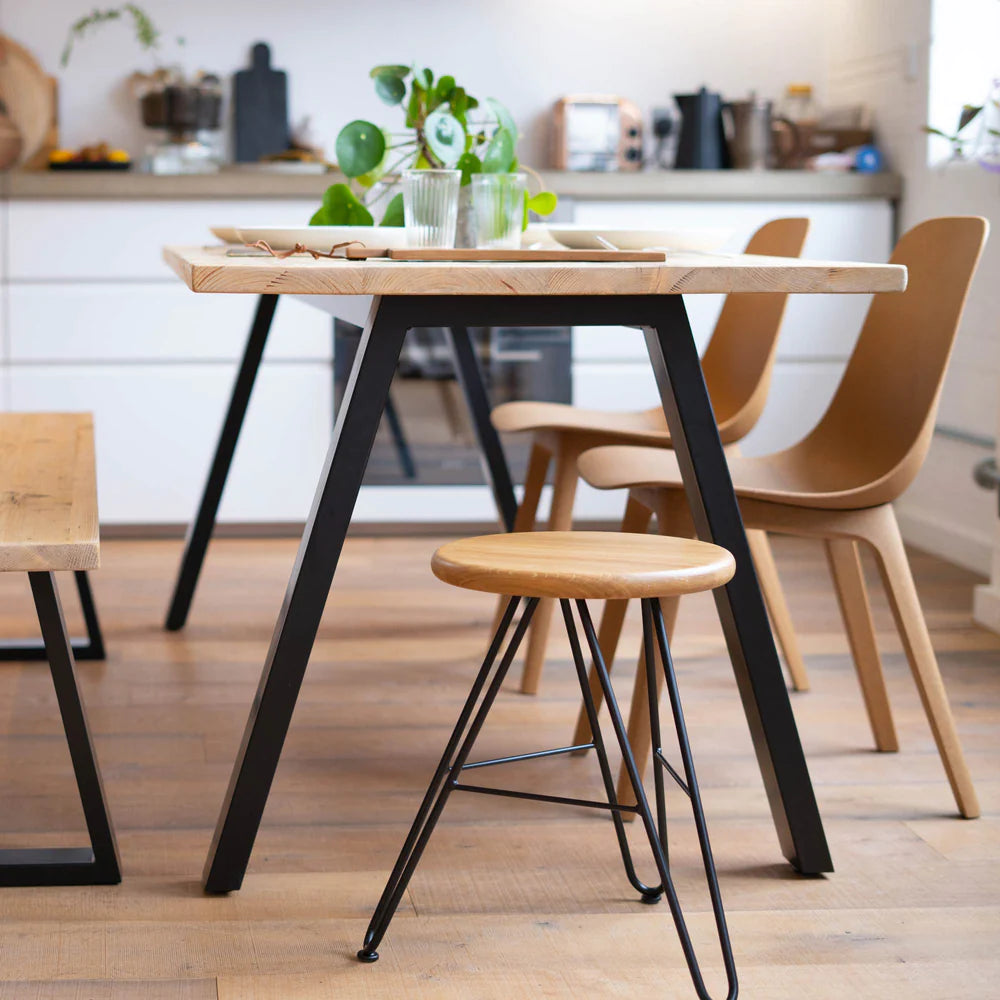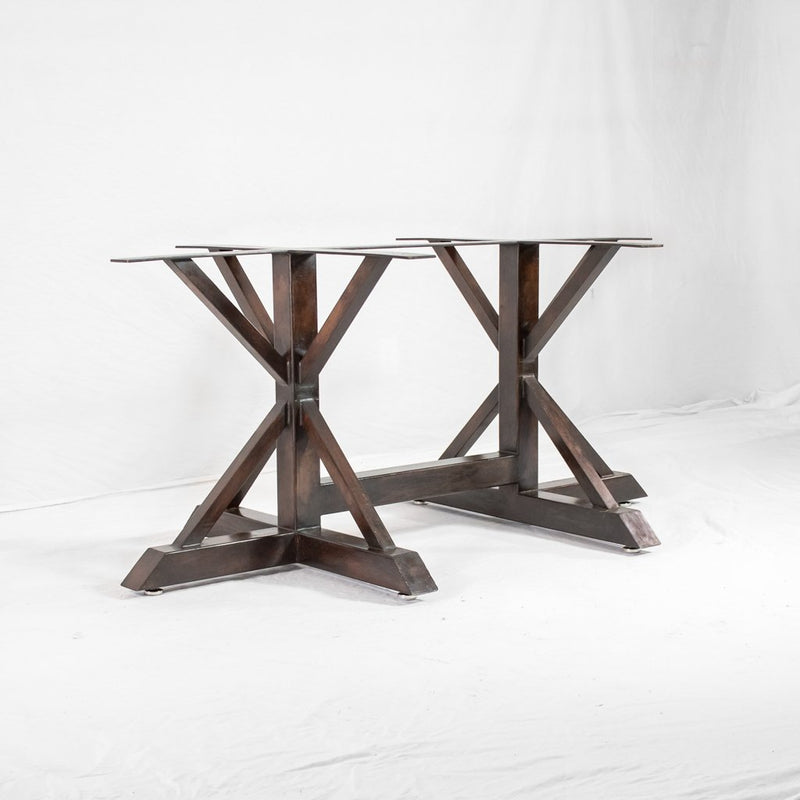Exactly How to Pick the Perfect Dining Room Table Legs for Your Home Decor
Picking the optimal dining-room table legs is a nuanced process that needs careful factor to consider of numerous components, including your room constraints, aesthetic preferences, and sensible demands. The interplay between designs, dimensions, and products can substantially affect the setting of your eating location, making it necessary to approach this decision methodically. As you contemplate the myriad options offered, it ends up being clear that the ideal choice extends beyond mere look; it can boost your total dining experience. What elements should you prioritize to ensure your selection complements your home's unique personality?
Assess Your Eating Room
Assessing your eating area is essential for selecting the right table legs that enhance both appearances and capability. Begin by gauging the dimensions of your eating area, including ceiling elevation, floor area, and closeness to other furnishings. This info will assist identify the appropriate dimension and height of your eating table, which directly affects the choice of table legs.
Following, take into consideration the design and format of your dining space. As an example, an open-concept design might take advantage of table legs that offer aesthetic lightness, such as slender metal or acrylic alternatives. Conversely, a much more traditional setting may ask for sturdy wood legs that provide a sense of durability.
Review the existing color palette and products in your dining area. Integrating the table legs with these components creates a cohesive appearance that enhances the general style. Additionally, think of the capability called for in your room. If you regularly organize large gatherings, consider legs that give added assistance and security.
Ultimately, a complete analysis of your eating area will lead you in making an educated choice, making certain that your table legs not just improve the visual appeal but also serve sensible objectives.
Consider Your Design Preferences
When selecting dining-room table legs, it is crucial to show on your personal style preferences, as they dramatically affect the total visual of your dining space. Your selection of table legs can either complement or contrast with existing decoration, making it essential to straighten them with your recommended indoor style theme.
If your home leans in the direction of a contemporary aesthetic, think about sleek steel or minimal wooden legs that give a clean, uncluttered look. For an extra standard method, luxuriant wooden legs with intricate makings can add a touch of beauty and refinement. Industrial designs take advantage of durable, resources such as redeemed timber and steel combinations, mirroring a rugged beauty.
Additionally, farmhouse and rustic designs frequently prefer tough, chunky legs that stimulate a sense of warmth and convenience. Conversely, if your decor is eclectic, you could choose unique shapes or a mix of materials to develop visual passion.

Evaluate Product Options
The choice of material for eating area table legs plays a pivotal function in both longevity and aesthetic appeal. Typical products include timber, steel, and composite alternatives, each offering distinctive characteristics that can influence the overall look and durability of your table.
Wood is a traditional option, recognized for its heat and versatility. Hardwoods like oak and walnut offer phenomenal toughness and can be ended up in various spots to match any type of decoration. Softwoods like pine are more prone to scratches and damages, making them much less excellent for high-traffic locations.
Steel legs, frequently crafted from steel or light weight aluminum, radiate modernity and industrial charm. They are highly durable and immune to wear, making them ideal for family members with kids or regular gatherings (dining room table legs). Furthermore, steel can be completed in various shades, boosting the personalization possibilities
Composite products, such as MDF or laminate, offer price and varied styles. While generally less sturdy than solid wood or steel, they can still supply an elegant appearance and are usually simple to maintain.
Inevitably, the product you pick need to align with your way of living, visual preferences, and the degree of use your table will certainly experience.
Determine Elevation and Size
Picking the proper height and dimension for your dining space table is crucial for both performance and comfort. The common height for eating tables generally varies from 28 to 30 inches, allowing ample legroom for a lot of individuals when seated. Nevertheless, it is vital to take into consideration the dimensions of your dining room and the kinds of chairs you intend to make use of.

Moreover, take into consideration the percentages of your eating room. A larger table in a sizable area can produce a grand setting, while a smaller table works well in even more intimate setups. Inevitably, the right height and size will harmonize with your overall decor and enhance the dining experience for you and your visitors.
Explore Modification Opportunities

Furthermore, the design of the legs can be tailored to fit different styles, you can find out more such as rustic, modern-day, or commercial. As an example, conical legs can evoke a mid-century modern feeling, while chunky, block-style legs might reverberate with conventional or farmhouse decor.
Home owners can likewise check out color coatings, from natural timber spots to repaint, enabling them to match or comparison with the tabletop and bordering design.
Furthermore, leg elevation can be changed to accommodate certain seating arrangements or personal choices, improving both convenience and functionality.
Last but not least, special embellishments, such as carvings or attractive brackets, can better personalize the table legs, making the eating experience not simply a meal yet a statement item in the home. By thinking about these modification choices, homeowners can produce a dining space table that really mirrors their individuality.
Final Thought
Picking the perfect eating area table legs requires careful factor to consider of numerous factors, including the More about the author measurements of the eating room, style preferences, material longevity, and desired height. Customization choices better enhance the capability to attain a natural visual that enhances the overall design. By systematically examining these components, homeowners can guarantee that the selected table legs not only meet useful requirements but also contribute positively to the dining experience and ambiance of the home.
Selecting the perfect dining space table legs is a nuanced procedure that needs cautious consideration of different aspects, including your area restrictions, aesthetic preferences, and practical requirements.Assessing your eating room is essential for selecting the right table legs that match both visual appeals and functionality.When identifying size, measure the area where the table will be placed to guarantee it fits pleasantly, permitting for at least 36 inches of clearance around the table for simple movement. A larger table in a sizable location can produce a grand ambiance, while a smaller table functions well in more intimate settings.Selecting the perfect dining area table legs needs careful consideration of numerous elements, including the measurements of the dining room, style preferences, product toughness, and preferred height.